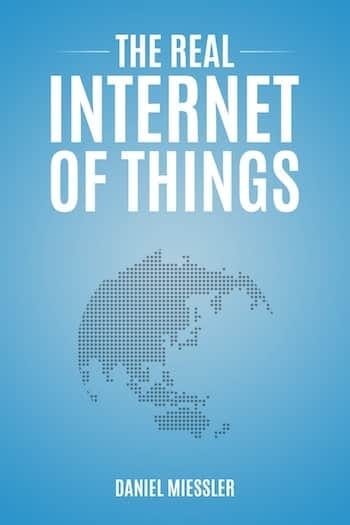The Real Internet of Things: Universal Daemonization

These are published chapters from my book The real Internet of Things, published on January 1st, 2017.
There currently isn’t a good way to maintain real-time information about objects in the world.
The way it’s currently done is indirect in a way that will seem primitive once we leave it behind. If you want information about a human, for example, you can’t contact the human directly. Instead you need to contact assorted third-party collections of information about them, and basically cobble together a best-case view.
Where is that data located? Hard to say—could be lots of places. What format is it in? Many options available there too. When was it last updated? That varies. How accurate is the information? Well, that’ll require research to determine.
It’s gross.
The eventual and forthcoming solution is to have information about objects emanate from the objects themselves. The centerpiece of evolved information architecture will be to have objects serve (or appear to serve) as their own sources of truth, with what I call a daemon (DAY-mun) serving as the interface.
All objects will have these daemons. Cars, houses, buildings, cities, businesses, etc. Objects will conceptually emanate their daemons from their physical locations, like a broadcast. Sometimes this will be associated with actual local and physical signals, but will usually be handled through precise online geolocation.
People will interact with objects through their daemons, which will be fully functioning interfaces that allow you to push and pull information as well as modify configurations and execute commands. In traditional computer terms, objects will have universally understood—and functionally comprehensive—APIs.
Daemons will first come to large objects, but will be useful for increasingly smaller, more granular, and more conceptual objects over time. Park benches, trees, sofas, clothing, etc. Physical objects will be obvious enough, but the subsequent step will be to add daemons to conceptual and virtual objects as well, such as businesses, contracts, applications, operating systems, relationships, etc.
Get a weekly breakdown of what's happening in security and tech—and why it matters.
The remarkable thing about these daemons is that the technology that will be used to build them is already quite common and available. These are technologies such as TCP/IP, IPv6, HTTPs, and RESTful services. Daemons will be very much like web services technology, which millions of developers already know how to use.
So this is the first building block: every object has a daemon—An API to the world that all other objects understand. Any computer, system, or even a human with appropriate access, can look at any other object’s daemon and know precisely how to interact with it, what its status is, and what it’s capable of.
Most importantly, humans themselves will also have daemons, and we’ll be moving through a world full of other daemons. Human daemons will hold all information about a person, compartmentalized based on type, sensitivity, access restrictions, etc., and that data will be used to send hyper-personalized requests to the daemons around us.
Walking a city block could bring us in contact with hundreds or thousands of them. Every business. Every car. Every person. The street lights, the city cameras, the park benches, the restaurants, the businesses, and the buildings.
Everything will have information and configuration options available, requests we can make, commands we can issue, and it will all be available through standardized protocols and schemas that the whole world speaks fluently.
Summary
The future of information architecture is for objects to become authoritative for their own data.
Every object in the world will have a daemon that presents itself in a common, transparent, and universally accessible way.
Daemons will be fully interactive, with the ability to learn about the object as well as interact with and/or control it.
The protocols for building and using the daemons will be standard across the world.